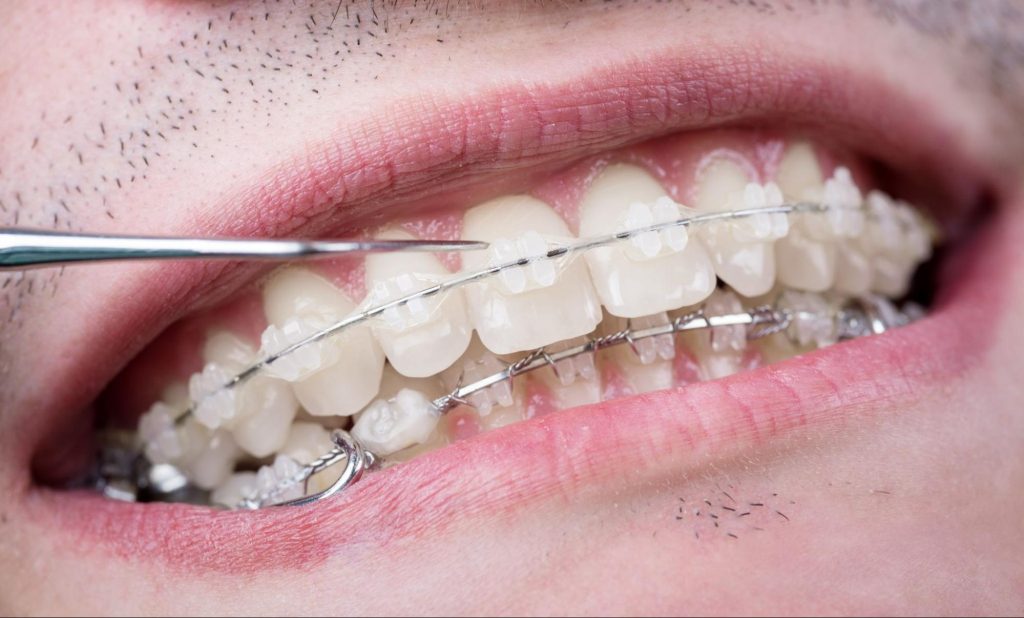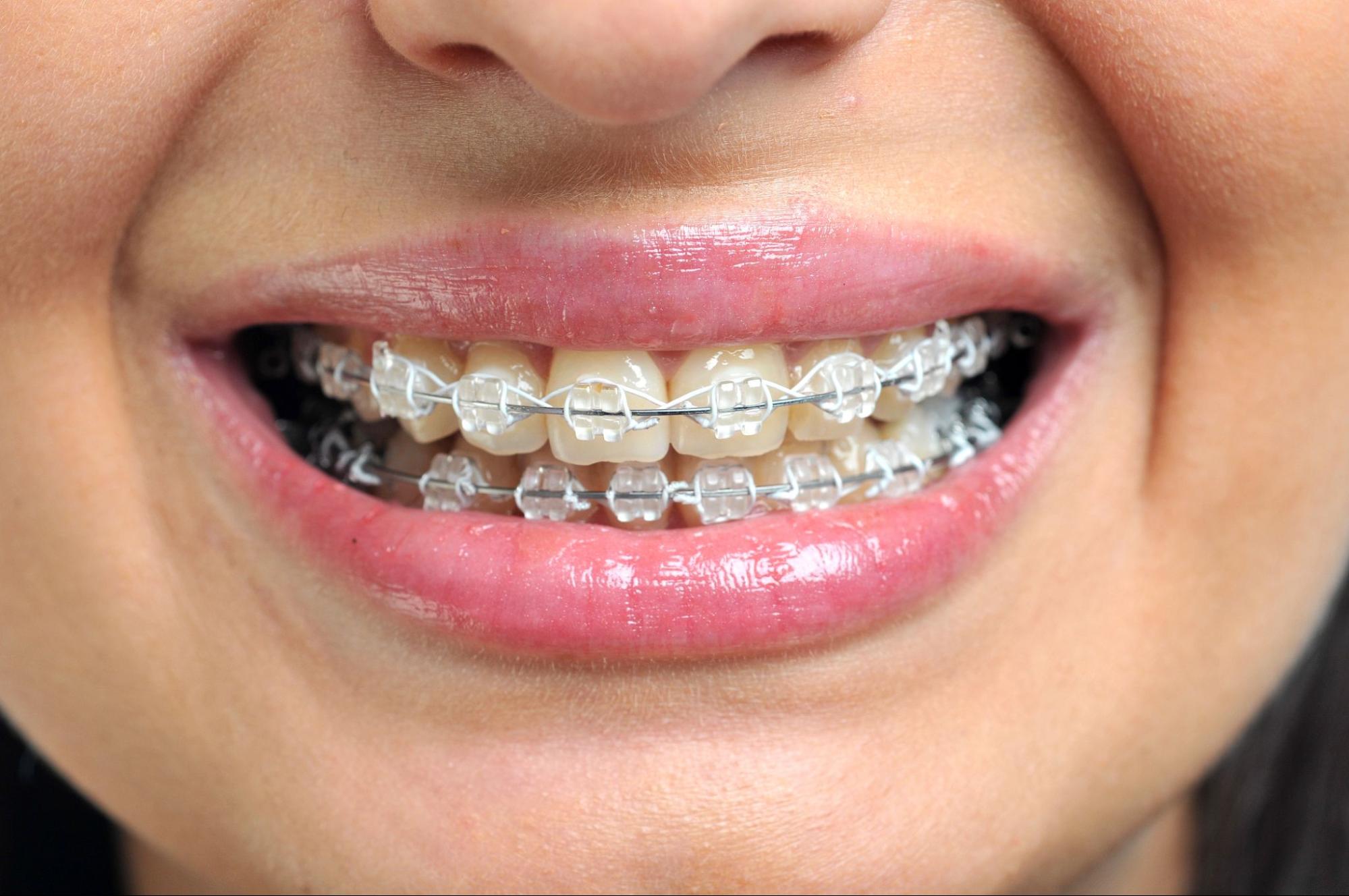Many people want straighter teeth but hesitate at the thought of a mouth full of metal. The idea of spending months, or even years, wearing something so visible can be discouraging. Clear dental braces have changed that conversation, offering a less noticeable option. They look better, but people still wonder if they perform just as well. That concern matters because a smile isn’t just about looks—it’s about lasting results, too.
What Are Clear Dental Braces?
Clear dental braces offer a more discreet way to straighten teeth using transparent or tooth-colored brackets. They work like traditional braces but are less noticeable in everyday interactions. These braces appeal to adults and teens who want subtlety without giving up performance. Though less visible, they use archwires and brackets to move teeth over time.
How Clear Dental Braces Work
Clear braces use brackets attached to each tooth, connected by a wire. The brackets are usually ceramic or composite, making them blend with your natural teeth. The orthodontist tightens the wire at intervals, applying pressure that shifts teeth into place. This process takes months or years, depending on the severity of the alignment. Functionally, clear braces perform the same job as metal braces.
Differences Between Clear Braces and Clear Aligners
Clear braces and clear aligners aren’t the same. Braces stay fixed to your teeth; aligners are removable. Aligners like Invisalign® work best for minor spacing issues. Clear braces can tackle more complex cases and are adjusted by professionals regularly. Aligners offer flexibility, but braces offer consistency and control.
How Traditional Braces Straighten Teeth
Traditional metal braces are the classic choice for fixing misaligned teeth and bite problems. They’re known for reliability and the ability to resolve even the most difficult dental issues. These braces are often used for teens but work well for adults, too. They’ve stood the test of time in terms of performance.
Bracket-And-Wire Mechanics
Metal braces use steel brackets bonded to each tooth. A metal wire threads through each bracket, applying steady pressure. As the orthodontist adjusts the wire, the force slowly moves your teeth. Over time, your jaw may also shift for bite correction. The system is precise and customizable per patient.
Treatment Scope and Control
Traditional braces offer excellent control over each tooth’s movement. They’re perfect for fixing major bite issues, tooth rotation, or crowding. The orthodontist can make real-time adjustments, which helps guide your treatment better. This level of control is tough to match with other options. It’s one reason many professionals still recommend them for challenging cases.
Clear Dental Braces vs. Traditional Braces
Both types of braces fix alignment issues, but they do it with different approaches and materials. Clear dental braces prioritize aesthetics without giving up function. Traditional braces are more visible but trusted for all levels of treatment complexity. Choosing between them depends on appearance, comfort, and what your teeth need:
Appearance and Social Comfort
Clear braces are nearly invisible, making them a favorite for adults. They reduce the self-consciousness that many feel with metal brackets, which helps people feel more confident during treatment. Teens often prefer them for social settings like school. They deliver results quietly without drawing attention.
Treatment Duration and Efficiency
Both systems take similar timeframes, usually 18 to 24 months. However, traditional braces may move teeth faster in severe cases. That’s because metal brackets can handle more pressure. Clear braces may need gentler adjustments to avoid breaking. Still, with proper planning, both can achieve strong results.

Maintenance and Oral Hygiene
Clear braces can stain if not cleaned well. You need to brush after every meal and avoid dark foods. Metal braces are easier to clean in some ways because they don’t discolor. However, both types require regular care to prevent plaque and cavities. Good hygiene is essential, no matter the style.
Material Durability and Strength
Metal brackets are stronger than ceramic ones. Clear braces can chip or crack under stress. It doesn’t happen often, but it is worth noting. For athletes or people with strong bites, metal may be safer. Still, many wear clear braces successfully without issues.
Are Clear Dental Braces As Effective for Complex Cases?
One of the biggest concerns with clear dental braces is their ability to handle challenging cases. Can they fix crowding, bite problems, or rotated teeth? In many cases, yes. The materials may differ, but the technique is nearly the same.
Mild to Moderate Alignment
Clear braces work great for mild and moderate alignment issues. They easily correct spacing, crowding, and crooked teeth. Most adults and teens with everyday alignment needs can benefit from them. The treatment plans are flexible and tailored to each mouth. Results depend more on planning than on the material used.
Addressing Severe Bite or Jaw Issues
Traditional braces may have an edge for serious bite problems. Metal brackets allow more pressure and are less fragile; orthodontists can adjust them more aggressively when needed. Still, many orthodontists successfully treat complex cases with clear braces. The deciding factor is usually the orthodontist’s judgment, not the bracket type.
Clear Dental Braces vs. Traditional Braces Cost
Costs vary based on treatment length, clinic, and region. Clear dental braces are slightly more expensive than metal ones. The material cost and extra care involved play a role. Still, for many, the cosmetic benefit is worth the price.
Factors That Influence Pricing
Several factors affect the cost of braces. Treatment complexity, location, and orthodontist experience all matter. Clear braces often cost more due to the materials used. Insurance may or may not cover the difference. Always ask for a full quote and payment options.
Long-Term Value and Results
If worn correctly, both clear and metal braces provide long-term results. The value comes from the outcome, not the material. If aesthetics are important, clear braces offer extra value. If durability matters more, metal might be a better choice. Either way, both provide straight, healthy smiles.
Who Should Choose Clear Dental Braces?
Some people are better suited for clear dental braces than others. Your lifestyle, appearance concerns, and treatment goals all matter. Age also plays a role, as adults prefer the low-visibility option. Understanding your daily habits helps you choose wisely.
Best Candidates Based on Age and Lifestyle
Adults and older teens are the best candidates for clear braces. They’re more likely to maintain good oral hygiene and appreciate the visual benefits during work or school. Lifestyle factors like frequent public speaking or photography can influence the choice. Braces shouldn’t distract from your everyday confidence.
When Traditional Braces Make More Sense
Metal braces may be better for young teens or kids. They’re tougher and easier to maintain. Metal offers more durability if a patient tends to be rough or forgetful. Also, those with severe misalignment might need stronger materials. Traditional braces may get results faster in those cases.
Clear Dental Braces and Orthodontic Supervision
No matter the type, braces need expert planning and supervision. Regular checkups help guide the treatment and fix any issues early. Adjustments keep your teeth moving on schedule. With clear braces, attention to detail matters even more.
Role of Regular Checkups
Orthodontists monitor progress every few weeks. They tighten wires, check brackets, and adjust the plan as needed. Missed appointments can delay your progress. With clear braces, even a small crack or loose bracket can affect results. Frequent visits keep everything on track.
Professional Adjustments for Accuracy
Braces require precision, and only trained professionals should adjust them. DIY fixes or delays can hurt your results. Orthodontists know how to apply the correct pressure safely. They also spot problems before they grow worse. This guidance ensures your treatment stays effective from start to finish.
Clear Dental Braces and Daily Lifestyle Factors
Braces don’t work in isolation. The daily habits of the person wearing them can make or break the results. Clear dental braces require more care than metal ones, especially regarding what you eat and how you clean them. Knowing how lifestyle affects your braces helps set realistic expectations and supports a smoother treatment process:
Eating Habits and Clear Braces Success
Food choices matter more with clear braces. Hard or sticky foods can damage ceramic brackets, which are more fragile than metal. Crunching ice, chewing gum, or biting into apples can cause breakage. It’s not just about keeping brackets intact—it’s about avoiding delays from emergency repairs. Patients who follow food guidelines often finish treatment faster and with fewer issues.
Habits That Affect Braces’ Performance
Daily habits like smoking, nail-biting, or chewing pens can weaken clear braces. Smoking, in particular, can stain the elastic ties and affect appearance. Brushing too hard can loosen brackets, while poor hygiene increases the risk of gum problems. Consistency in brushing and flossing is key. Success with clear braces often depends on self-discipline more than the materials.
How Clear Dental Braces Move Your Teeth
Understanding how braces move teeth makes treatment less mysterious. Both metal and clear braces rely on pressure and bone remodeling biology. Knowing how this works gives patients more clarity on why appointments and timing matter. It also explains why some cases take longer than others, even with the same type of braces.
Pressure and Bone Response
When braces apply pressure to a tooth, it triggers bone remodeling. The bone around the tooth breaks down on one side and rebuilds on the other, allowing the tooth to shift without damaging roots or tissue. Clear braces apply this pressure just like metal ones. The bracket material doesn’t affect the biology; the technique matters.
Why Timing and Consistency Count
Tooth movement is gradual because the bone needs time to respond. Skipping visits or breaking brackets disrupts this rhythm. Orthodontists schedule adjustments based on how the body heals and adapts. Each appointment keeps that process moving forward. Consistency is critical—clear braces may look gentle, but they rely on precise timing to succeed.

Get Real Results With Clear Dental Braces
Choosing how to straighten your teeth isn’t just cosmetic; it’s a decision that shapes your appearance. Clear dental braces offer a confident, quiet, and effective path. They don’t scream for attention but do the job with precision. If you’ve been holding back because of appearance, now’s the time to move forward. A conversation with the right orthodontist can lead to more than a straight smile; it can reshape how you carry yourself every day.
Explore more expert insights on clear dental braces at the Meader Family Dentistry blog.






